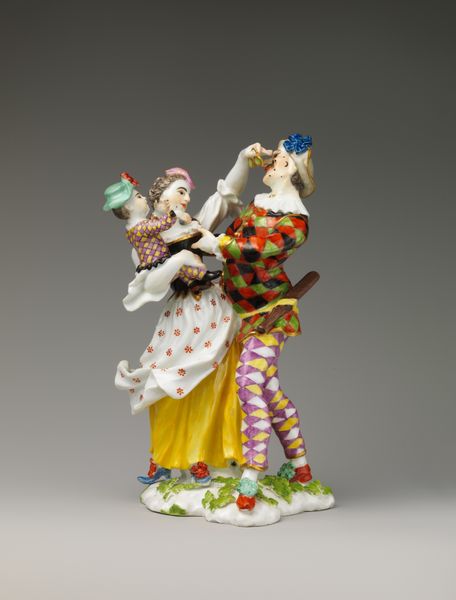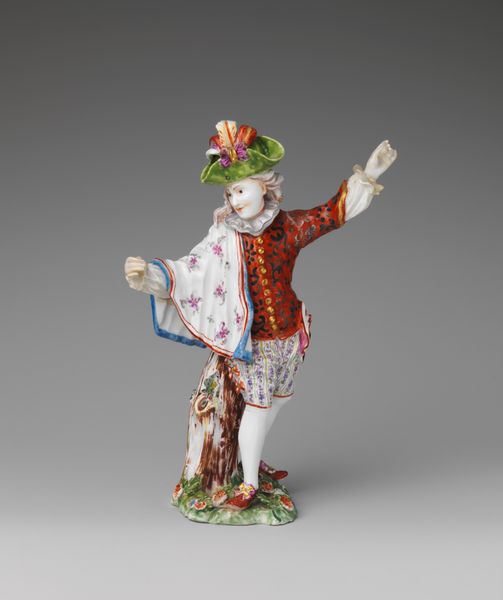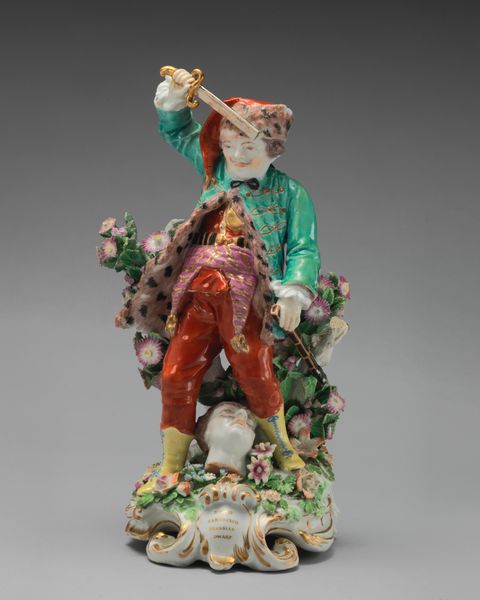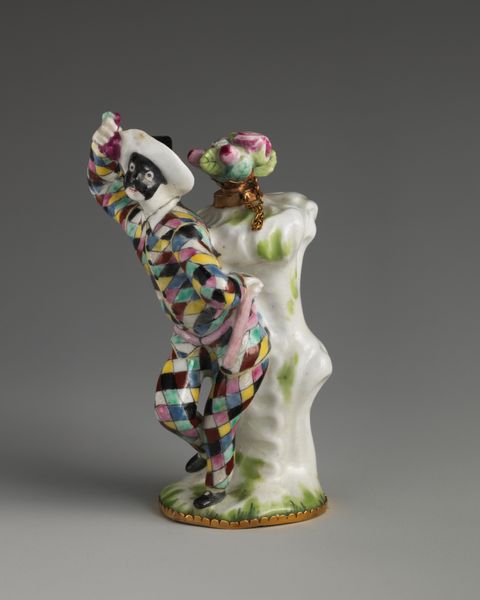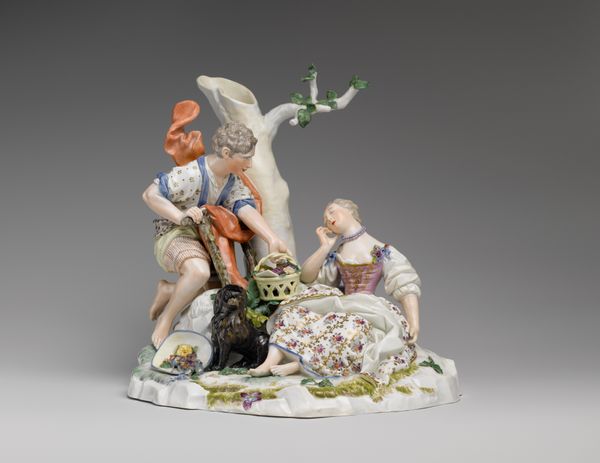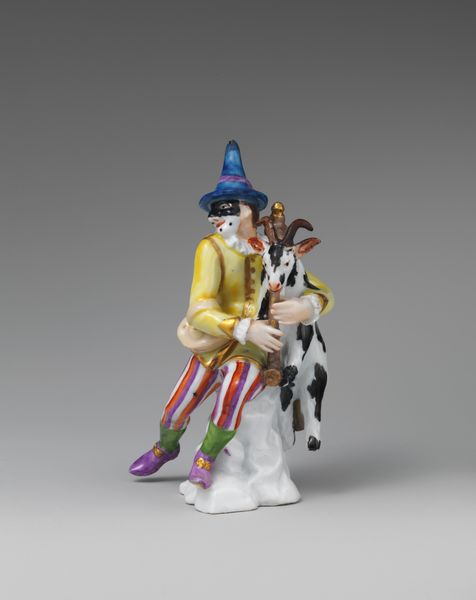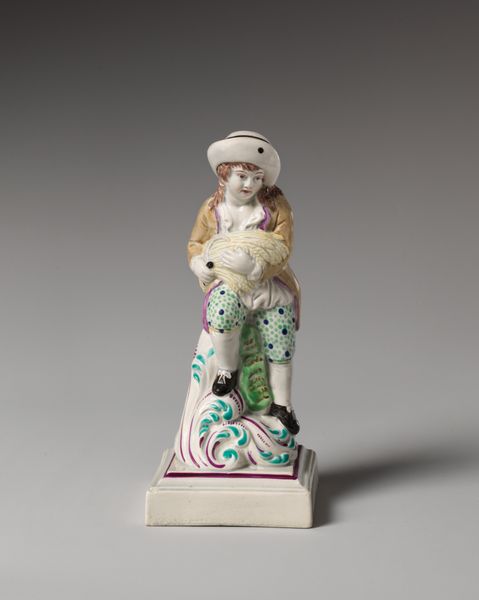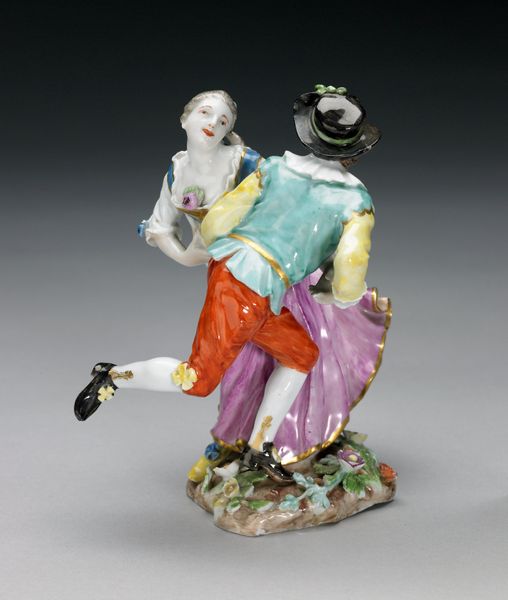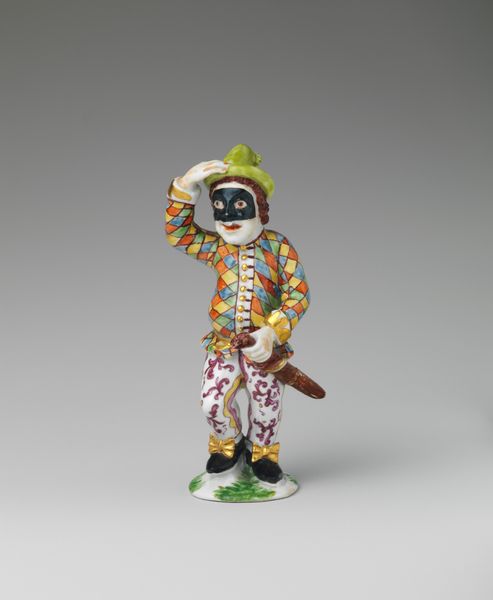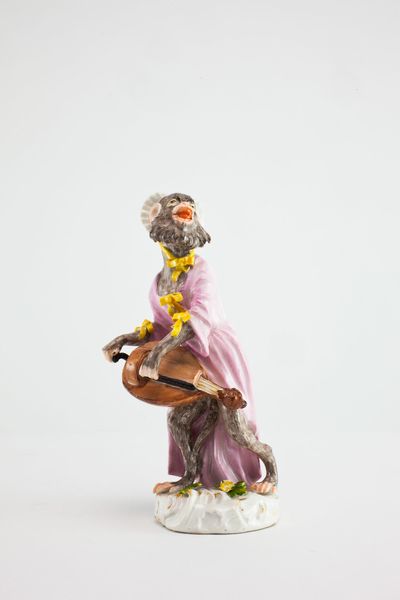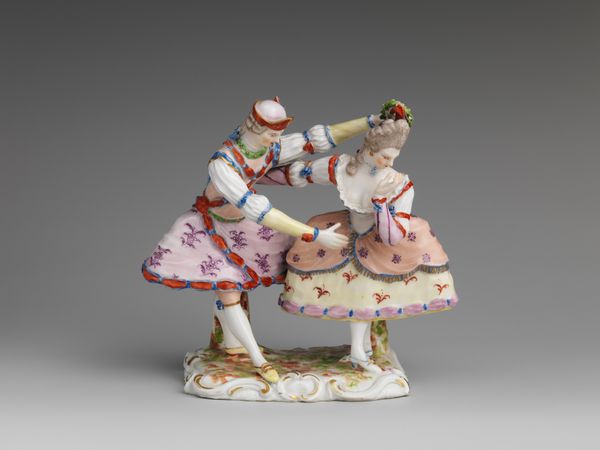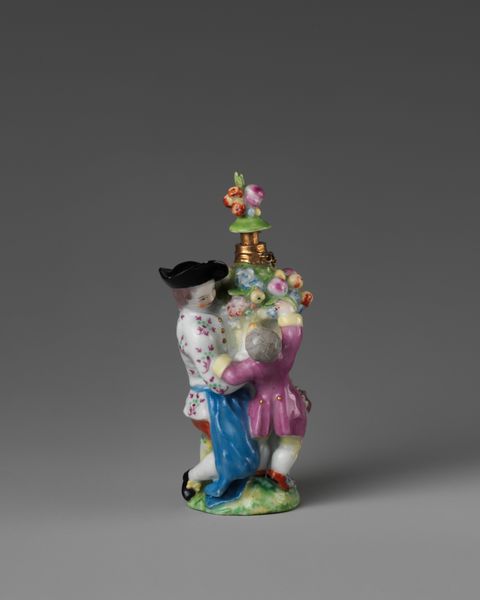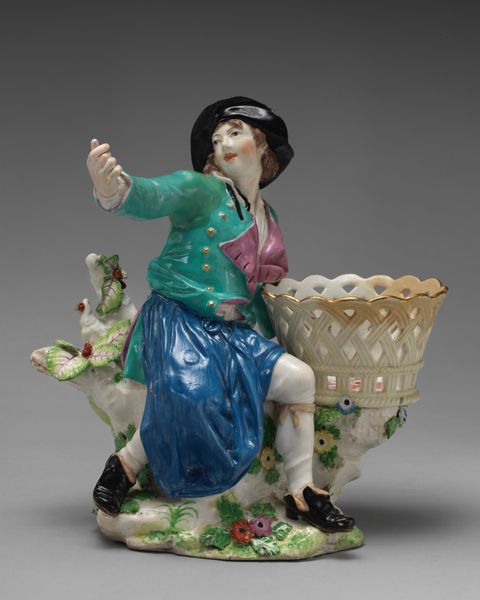
ceramic, porcelain, sculpture
#
ceramic
#
porcelain
#
figuration
#
sculpture
#
genre-painting
#
decorative-art
#
miniature
#
rococo
Dimensions: Overall (confirmed): 6 7/16 x 5 3/16 x 5 7/8 in. (16.4 x 13.2 x 14.9 cm)
Copyright: Public Domain
Curator: Let’s discuss this captivating porcelain sculpture, "Fighting Harlequins," created by the Meissen Manufactory sometime between 1735 and 1745. Editor: My first impression is playful yet violent! The figures are so detailed, almost whimsical, but there's a real tension in their postures. Curator: Absolutely. These harlequins are classic commedia dell'arte figures, but Meissen elevates them beyond mere theatrical representation. Think about the social context: porcelain figures like these became incredibly popular in aristocratic circles during the Rococo period. Editor: As status symbols, certainly. I wonder about the statement it makes beyond luxury. Are these harlequins simply entertaining, or is there a subtle commentary on class dynamics in their slapstick battle? Is the exaggerated violence saying something about societal conflict? Curator: It's fascinating how the material itself—delicate porcelain—contrasts so sharply with the rough and tumble subject matter. These porcelains often echoed larger paintings, prints, or social commentary from earlier periods, and this period also represents the expansion of secular culture. Editor: The cards all over one Harlequin’s outfit, almost like a skin, imply more than mere games. Maybe life under hierarchical societal rules in the mid-1700's was akin to participating in a game controlled by the ruling class? Even the miniature scale serves a purpose, allowing a powerful patron to literally hold this symbolic struggle in their hand, an expression of dominion made more vivid in porcelain form. Curator: That interplay between object and owner underscores the dynamic inherent in Rococo decorative arts. And while these smaller sculptures may seem apolitical on the surface, one has to consider that everything from patronage to iconography involved a negotiation of social mores and sometimes the subversion of them, so to me, porcelain is like a mirror reflecting elite society's obsession with frivolity and wealth. Editor: I agree completely. Understanding its historical context and the ways we choose to consume this artwork makes it anything but benign! Thanks, this has certainly shifted my thinking about this charming, yet disquieting, object. Curator: And I feel as though you have nudged me towards accepting a much less benign interpretation of something I knew and valued primarily as art for art's sake.
Comments
No comments
Be the first to comment and join the conversation on the ultimate creative platform.
